 |

Slide 1
Virtual
University of Pakistan
Data
Transfer Service
(DTS)
Introduction
Lab
lec:1
Ahsan
Abdullah
Assoc. Prof.
& Head
Center for
Agro -Informatics
Research
www.nu.edu.pk/cairindex.asp
National
University of Computers & Emerging
Sciences, Islamabad
Email:
ahsan101@yahoo.com
DWHAhsan
Abdullah
-
1
Slide 2
Data
Transformation Services
· DTS
Overview
· SQL
Server Enterprise
Manager
· DTS
Basics
DTS
Packages
DTS
Tasks
DTS
Transformations
DTS
Connections
Package
Workflow
DWH Ahsan
Abdullah
-
2
Microsoft®
SQL ServerTM 2000 Data Transformation
Services (DTS) is a set of graphical
tools
and programmable
objects that allow you
extract, transform, and consolidate
data from disparate
sources
into single or multiple
destinations. SQL Server Enterprise
Manager provides an easy
access to
the tools of DTS.
The
purpose of this lecture is to
get an understanding of DTS
basics, which is necessary to
learn
the
use of DTS tools. These
DTS basics describe the
capabilities of DTS and summarize
the
business
problems it addresses.
350
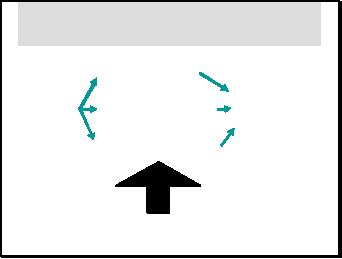
Slide 3
DTS
Overview
Extract
Data
Single
or
Disparate
Sources Transform
Data Multiple
Destinations
of
data
Consolidate
Data
DTS, Graphical tools
& Programmable objects
DWH -Ahsan
Abdullah
3
Many
organizations need to centralize
data to improve corporate
decision -making. However,
their
data
may be stored in a variety of formats
and in different locations.
Data Transformation
Services
(DTS) address this vital
business need by providing a
set of tools that let you
extract,
transform, and
consolidate data from
disparate sources into
single or multiple
destinations
supported by
DTS connectivity.
DTS
allows us to connect through
any data source or
destination that is supported by
OLE DB.
This
wide range of connectivity that is
provided by DTS allows us to extract
data from wide
range of
legacy systems. Heterogeneous
source systems store data
with their local formats
and
conventions.
While consolidating data
from variety of sources we
need to transform names,
addresses,
dates etc into a standard
format. For example consider a
student record management
system of a
university having four
campuses. A campus say `A'
follows convention to store
city
codes
"LHR" for Lahore. An other
campus say `B' stores
names of cities "Lahore",
campus `C'
stores city
names in block letters `LAHORE',
and the last campus `D'
store city names as
`lahore'.
When the data from
all the four campuses is
combined as it is and query is
run "How
many
students belong to `Lahore'?" We get
the answer only from
campus B because no other
convention for
Lahore matches to the one in
query.
To combine
data from heterogeneous
sources with the purpose of
some useful analysis
requires
transformation of
data. Transformation brings data in
some standard format.
Microsoft
SQL Server provides graphical
tools to build DTS packages.
These tools provide
good
support
for transformations. Complex
transformations are achieved through VB
Script or Java
Script
that is loaded in DTS
package. Package can also be
programmed by using DTS
object
model instead of
using graphical tools but
DTS programming is rather
complicated.
351
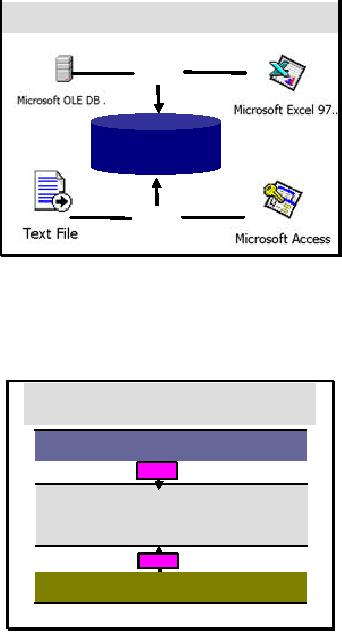
Slide 4
DTS
Overview: Concept
DTS
Centralized
Data
DTS
DWH-Ahsan
Abdullah
4
The
slide shows the
heterogeneous sources of data.
Position of DTS while consolidating
the data
into a
single source is also clear
from the slide. In legacy
systems we may come across
the text
files as a
source of data. Microsoft
Access is a database management
system, maintains dat a
in
tables,
and columns validate the
input to the system. We
often find legal values are
stored in these
sort of
data management systems. But
when we deal with text
files no validation mechanism
for
input is
there. Therefore we may come
across illegal and rubbish values in
text files. This
makes
the
process of transformation further
complicated.
Slide 5
DTS
Overview: Example
MUHAMMED
ANWAR
8-JUN-1978
CH MUHMD.
ASLAM
23-Nov-1980
DTS
MOHAMMAD
ANWAR
08/06/1978
CHOUDHARY
MOHAMMAD ASLAM
23/11/1980
AHMAD
JAHANZEB
05/08/1980
MOHAMMAD
FARRUKH
08/11/1979
DTS
AHMED
JAHANZEB
8-5-80
M.
FARRUKH
11-8-79
DWH-Ahsan
Abdullah
5
In the
this slide we may see three
data management systems.
Data is extracted from two
systems,
top and
bottom, and is loaded into
the standardized system shown in
the middle. We may see
two
transformations
over here. First one is name
transformation and the other one is
date
transformation. In
the database management
system shown at the top we
have two names
Muhammed Anwer
and Choudhary Mohammed Aslam.
Whereas in the system shown at
the
bottom we have
two different names Ahmed
Jahanzeb and Muhammed Farrukh. Out of
four
names
three names contain Muhammed but
with different spellings. Computer
can not identify
that
the word `Mu hammed' is
intended at all the three
locations. So while consolidating
data
352

names
are transformed to standard spellings of
names. Similarly Date formats
are different in
both source
systems and it is standardized in
destination system (middle
one).
Slide 6
DTS Overview:
Operations
· A set of
tools for
Providing
connectivity to different
databases
Building
query graphically
Extracting
data from disparate
databases
Transforming
data
Copying
database objects
Providing
support of different
scripting
languages( by
default VB-Script and
J-Script)
DWH-Ahsan
Abdullah
40
DTS
contains a set of tools that
provides a very easy
approach to build a package
and execute it.
Writing or
building a package through programming is a
complex task but DTS
tools like DTS
Designer and
Import/Export Wizard do this
entire complex task for
user just through a
single
click of button.
Not only package building
but query building has also
very sophisticated
support
in DTS
tools.
Slide 7
DTS
Overview: Tools
· DTS
includes
Data
Import/Export Wizard
DTS
Designer
DTS Query
Designer
Package
Execution Utilities
· DTS
Tools can be
accessed
through "SQL
Server Enterprise
Manager"
DWH-Ahsan
Abdullah
41
Package
execution utilities are used
to run or execute a package, no
matter package is
designed
through the
tools provided by DTS or any
external tool like Visual
Basic. All these tools
can be
accessed through
the SQL Server Enterprise
Manager.
Open
the node Data Transfer
Services in SQL Server Enterprise
Manager. Choose the option
in
which
any finished package is
saved. Right click the
package and get option to
execute it.
353
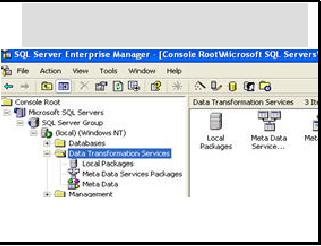
Slide 8
DTS
Overview:
SQL Server
Enterprise Manager
Path:
Start >>
Programs
>> Microsoft
SQL Server
>> Enterprise
Manager
DWH-Ahsan
Abdullah
6
The
Data Transformation Services
(DTS) node of the SQL
Server Enterprise M anager
console
tree
provides facilities for accessing
DTS tools, manipulating DTS
packages, and
accessing
package
information. You can use
these facilities to:
·
Open a
new package in the DTS
Import/Export Wizard or DTS Designer. In
DTS
Designer, you
can select and edit an
existing package saved to
SQL Server, SQL Server
2000 Meta
Data Services, or to a structured
storage file.
Action
>> New Package
Connect to
and import meta data
from a data source, and
display the meta data in
the
·
Meta
Data node of SQL Server
Enterprise Manager.
Right
click Meta Data Services
Package and select option
import Meta
Data
Open a
package template in DTS
Designer.
·
Right
click the package that is
required to be opened in DTS
Designer and select the
option
open
in DTS Designer.
Display the
version history of a package, edit a specific
package version in
DTS
·
Designer,
and delete package
versions.
Right
click the package and
select the option
Versions.
Display and
manipulate package log
information.
·
Right
click the node "Local
packages"/"Meta data services
packages" in the tree
and
select
the option view
logs.
Set
the properties of DTS
Designer
·
354

Right-click
the Data Transformation
Services node and click
Properties.
Execute a
package.
·
Right
click the package and
click execute
·
Schedule a
package.
Right
click the package and
click schedule
Slide 9
DTS
Overview: Market
·
SQL
Market
·
Diverse
Usage
·
Courses and
certifications
·
High
costs
DWH-Ahsan
Abdullah
7
SQL Server
is becoming one of Microsoft's
biggest businesses, as being
used
by people
from wide spectrum of
domains. The scope of the
SQL Server is so
diverse
that whole course can be
offered and actually such
courses are being
offered in
developed countries. Microsoft
also offers training courses
and
certifications
are expensive enough.
For example, "Designing
and
Implementing
OLAP Solutions with MS SQL
Server 2000" is a course that
provides
students with the knowledge
and skills necessary to
design,
implement,
and deploy OLAP solutions by
using Microsoft SQL Server
2000TM
Analysis
Services. The importance of
the course is well depicted
by its cost
i.e. $2500+GST
355

Slide 10
DTS
Basics
·
DTS
Packages
·
DTS
Tasks
·
DTS
Transformations
·
DTS Package
Workflows
·
DTS
Tools
·
Meta
Data
DWH-Ahsan
Abdullah
7
Before
learning to use DTS some
basic concepts like DTS
packages, DTS tasks,
transformations
and
workflows are important to
understand.
When we
want to use computers to
perf orm some particular
task through programming, what we
do? We
write a program in some programming
language. Program is a sequence of
logical
statements
that collectively achieve the
purpose of the programmer. This
analogy is useful in
understanding
the concept of package and
tasks in DTS. DTS package is
exactly like a
computer
program. Like a
computer program DTS package is
also prepared to achieve
some goal.
Computer program
contains set of instructions
whereas DTS package contains
set of tasks. Tasks
are
logically related to each
other. When a computer program is run,
some instructions are
executed in
sequence and some in parallel. Likewise
when a DTS package is run
some tasks are
performed in
sequence and some in parallel.
The intended goal of a computer
program is
achieved when
all instructions are
successfully executed. Similarly
the intended goal of a
package
is achieved when
all tasks are successfully
accomplished.
DTS
task is a unit of work in a
package. Tasks can be
establishment of connection to s ource
and
destination
databases, extraction of data
from the source, transformation of
data, loading of data
to the
destination, generation of error
messages and emails
etc.
In real world
systems when we talk about
heterogeneous sources of data
there arise a lot of
complicated
issues. Heterogeneous systems
contain data with different
storage conventions,
different
storage formats, different
technologies, and different
designs etc. Power of DTS
lies in
extracting
the data from these
heterogeneous sources, transforming to
some standard format
and
convention, and
finally load data to some
different system with totally
different parameters
like
technology,
design etc. Microsoft SQL
Server provides user -friendly tools to
develop DTS
Packages.
Through graphical editor/ designer or
wizards we can put together
set of tasks in a
package.
Order or sequence in which
the tasks are required to be
performed can be set
through
conditions like
"On success of task A task B
should be performed otherwise task C should
be
performed."
This order or sequence of execution is
called Workflow of a
package.
356
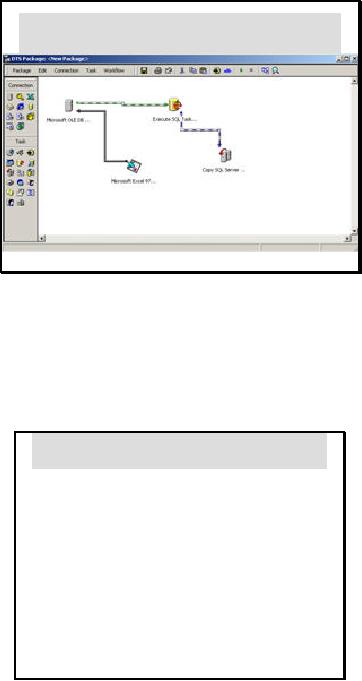
In this
lecture we will see these
concepts in detail and in subsequent
lectures we will
develop
packages
and practically get into the
use of DTS functionalities.
Slide 11
DTS
Packages
(Cont.)
DWH-Ahsan
Abdullah
9
Slide shows
how a package looks like.
We can only view
package as a form of
graphical
objects as shown in the
slide. Here two connections
are established.
"Microsoft
OLEDB
Driver" and "Microsoft Excel
97" are connections.
Blac k link between
two
connections is
transformation task. "Execute SQL"
and "Copy SQL Server"
both are
tasks. Green
and blue links are
workflows. Green link shows
`On
the Success of' i.e.
on the
success of Connection establishment
execute task execute
SQL.Blue link shows
`On
the Failure of' on the
failure of the previous task
execute another task Copy
SQL
Server
objects.
Slide 12
DTS Package:
Contents
· DTS
Package is an organized
collection
of
Connections
DTS
tasks
DTS
transformations
Workflows
DWH-Ahsan
Abdullah
8
A DTS
package is an organized collection of
connections, DTS tasks, DTS
transformations, and
workflow
constraints assembled either with a
DTS tool or programmatically and
saved to
357

Microsoft®
SQL ServerTM, SQL Server 2000
Meta Data Services, a
structured storage file, or
a
Microsoft Visual
Basic® file.
Each
package contains one or more
steps that are executed
sequentially or in parallel when
the
package is run.
When executed, the package
connects to the correct data
sources, copies data
and
database
objects, transforms data,
and notifies other users or
processes of events.
Slide
13
DTS Package:
Execution
· When a
package is run
It connects to
data sources
Copies
data and database
objects
Transforms
data
Notifies
other users and processes
of
events
DWH-Ahsan
Abdullah
10
When we
run a Data Transformation
Services (DTS) package, all
of its connections,
tasks,
transformations,
and scripting code are
executed in the sequence
described by the
package
workflow.
We can
execute a package
from:
Within a
DTS tool.
·
SQL Server
Enterprise Manager.
·
Package
execution utilities.
·
Slide1 4
DTS Package:
Creating
· Package
can be created by
one
of the
following three
methods:
Import/Export
wizard
DTS
Designer
Programming
DTS applications
DWH-Ahsan
Abdullah
11
358
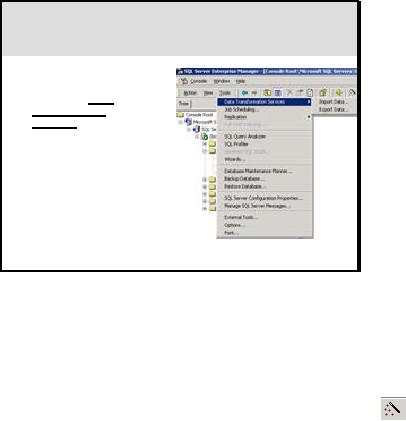
Microsoft
SQL Server provides a good
support for the tools
that are helpful in building
a
package.
Import/Export Wizard and DTS Designer
both are the graphical
methods of building a
package. Both
tools provide support to run
the package also. Building a
package means putting
all
the tasks that are
supposed to be performed in a particular
package together and setting
their
order of
execution or defining workflow. Whereas
when we actually run a package
all the tasks
are actually
performed.
Programming DTS
applications without the help of
these user-friendly tools is a difficult
task.
Packages
can be programmed using some external
tool like Visual Studio in
VC++ or VB. Such a
programming
requires deep understanding of
DTS object model.
Slide 15
DTS Package:
Creating
Import/Export
1. Expand
tree node
mentioning
`Data
Transformation
Services'
and
select
the option
for
available
location to
save
package
2. Tool>Data
Transfer
Service>
Import/Export
DWH-Ahsan
Abdullah
12
Data
Import and Export wizard can
be accessed through a number of
ways.
1. Start >
Programs> Microsoft SQL Server>
Data Import/Export Wizard
2. Through
SQL Server Enterprise
Manager
a. In SQL
Server Enterprise Manager we can
see a Tree view of SQL
Server
objects
and services. Expand Tree,
select the node "Data
Transformation
Services". We
can see two options
(discussed earlier) to store
Package. Select
any
one of them (local OR SQL Server
Meta Data Services). Then
Click Tools >
Data
Transformation Services > Import /
Export Data.
b. After
Expanding Data Transformation Services
node we can click
on
tool
bar to launch
the wizard
359
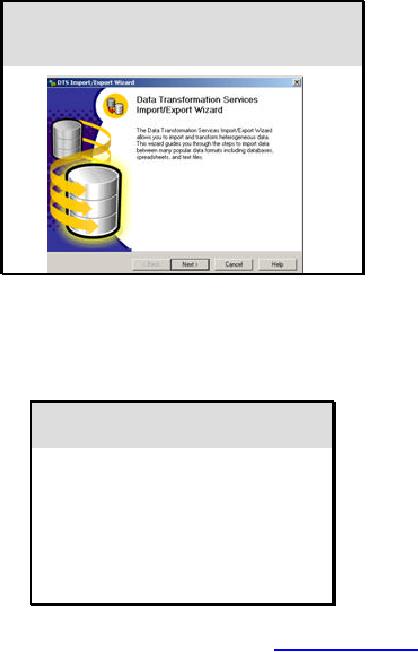
Slide 16
DTS Package:
Creating
Data
Import/Export Wizard
DWH-Ahsan
Abdullah
13
This is
how wizard looks like. Just
press Next and start working
with a user friendly
wizard.
An easy
-to-use tool that guides
you, a step at a time, through the
process of creating a DTS
package. It is
recommended for simple data
transformation or data movement solutions
(for
example,
importing tabular data into
a SQL Server 2000 database). It provides
limited support for
transformations.
Slide 17
DTS Package:
Creating
DTS
Designer
· DTS
Designer
Graphical
objects
For complex
workflows
It supports more
complex
transformations as
compared to
wizard
DWH-Ahsan
Abdullah
17
DTS
designer is an applicat ion
that uses graphical objects to help you
build packages containing
complex
workflows. DTS Designer includes a
set of model DTS
Package Templates,
each
designed
for a specific solution that you can
copy and customize for
your own installation. It is
recommended
for sophisticated data transformation
solutions requiring multiple
connections,
complex
workflows, and event-driven logic.
DTS package templates are
geared toward new
users
who
are learning about DTS
Designer or more experienced users who
want assistance setting up
specific
DTS functionalities (for example,
data driven queries).
360
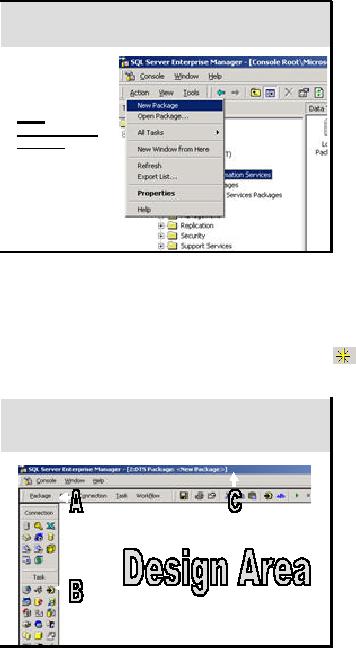
Slide 18
DTS
Package: Creating
DTS Designer
Console
1. Expand
tree
node
mentioning
`Data
Transformation
Services ' and
select
the
option
for
available
location to
save
package
2.
Action>New
DWH-Ahsan
Abdullah
15
Package
DTS
Designer can also be
accessed through multiple
ways.
1. Whenever a
saved package is opened by double click
or through right click, it is
opened
in DTS
Designer
2. SQL Server
Enterprise Manager can also
be used to access DTS
Designer
a. After
Expanding Data Transformation Services
node select Action >
New
Package
b. After
Expanding Data Transformation Services
node select
on toolbar
to
access
DTS Designer
Slide 19
DTS
Package: Creating
DTS Designer
Environment
DWH-Ahsan
Abdullah
16
The
slide shows environment of DTS
Designer. In designer we can
see four windows
A. Connection
toolbar
B. Task
toolbar
C. General
toolbar
D. Design
Area
361
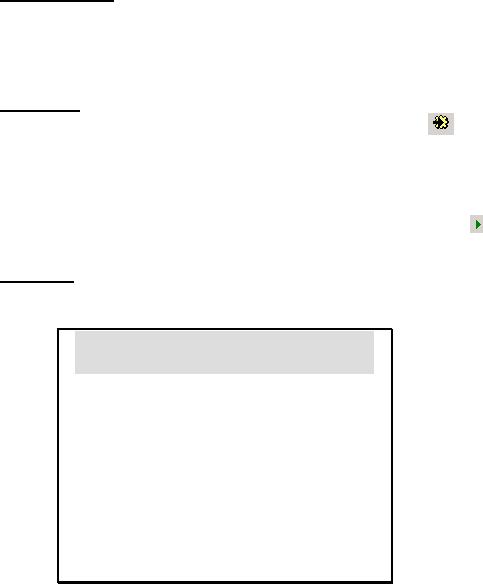
A. Connection
toolbar
Connection
toolbar shows all available
connections in the form of
icons or symbols. All
OLE
DB supported
connections are available. To
establis h a new connection
just click the
correct
icon and drag to
design area. Then set
properties to your connection. In
case of any
difficulty
in identifying
the connection icon, click on
Connection on Menu bar just
above the
connection
toolbar.
B. Task
Toolbar
Tasks
toolbar shows icons for
all tasks that are
supported by DTS. For
example
is
used
to set
transformation task. This also works as
drag and drop. DTS Designer is very
friendly to
use as it
guides user about what to do after
picking a certain option. For new users
who do not
recognize
the tasks through icons, in
the top menu bar `Task' is
available.
C. General
Toolbar
This
toolbar provides general
functionality like saving a
package, executing a
package.
is
used to
execute a package
D. Design
Area
Design Area is
used to design a package through
the objects available in the
tool bars.
Slide
20
DTS Package:
Creating
Programming
· Programming
DTS applications
Complicated &
technical way
For
experienced developers
and
programmers
only
Requires
Visual C++ or Visual
Basic for
programming
DWH-Ahsan
Abdullah
18
Programming
applications that you can
use to write and compile a
DTS package either in
Microsoft Visual
Basic® or Microsoft Visual C++®. It is
recommended for developers
who want
to access
the DTS object model directly
and exert a fine degree of
control over package
operations.
Packages created programmatically can be
opened and further
customized in DTS
Designer. In
addition, packages created in the
DTS Import/Export Wizard or DTS Designer
can
be saved as a
Visual Basic program and
then opened and further
customized in a development
environment
such as Microsoft Visual
Studio®.
362
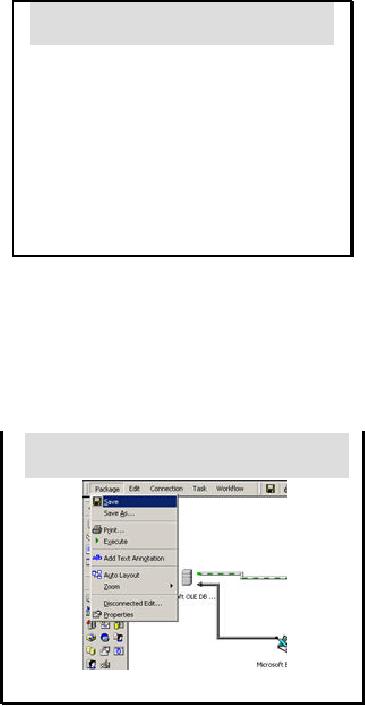
Slide 19
Saving a DTS
Package
· DTS
Package can be saved
to
Microsoft
SQL Server
SQL
Server 2000 Meta Data
services
Structured
storage files
A Microsoft
Visual Basic file
DWH-Ahsan
Abdullah
19
When you save a
Data Transformation Services
(DTS) package, you save all
DTS connections,
DTS
tasks, DTS transformations,
and workflow steps and
preserve the graphical layout of
these
objects on
the DTS Designer
design
While
saving a package we get
different options as destination location
for the package.
Package
can be
saved to Microsoft SQL
server. Another option to save a package
is SQL Server Meta
Data
Services. The advantage
which we get when we store
our package to SQL Server
2000 Meta
Data
Services is that we may
maintain meta data
information of the databases
involved in the
packages
and we may keep version
information of each package. Furthermore
package can be
stored in a
structured file and
Microsoft visual basic
file.
Slide 20
Saving a DTS
Package:
Illustration
DWH-Ahsan
Abdullah
20
This
slide illustrate the package saving
process.
363
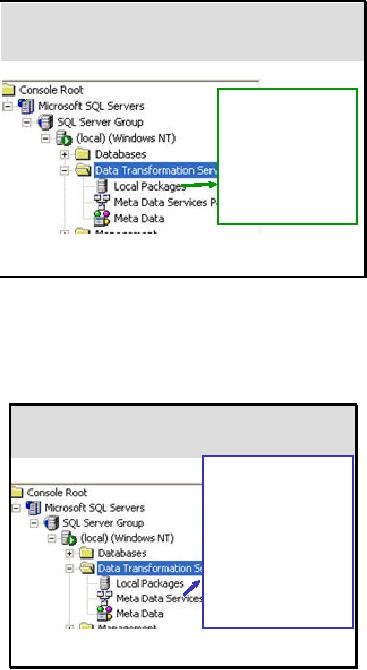
Slide 21
Saving a DTS
Package:
SQL
Server
Contains
Packages
that
are
saved to
this
particular
instance
of
SQL
Server
DWH-Ahsan
Abdullah
21
Data
Transformation Services node of SQL
Server Enterprise Manager contains
three options to
locate
the package saved earlier.
The first option is local
Packages. These are the
packages that
are
saved to this particular instance of
SQL Server. Microsoft SQL Server
may have multiple
instances on
each machine or over a
Network. Local packages are
those that are saved to
this
particular
instance of SQL Server.
Slide 22
Saving a DTS
Package:
Meta Data
Services
Contains
Packages
that are saved
to
Meta Data
Services
of this
instance of
SQL
Server. It
maintains
version
information of
each
package saved
to
it.
DWH-Ahsan
Abdullah
22
As it has
been discussed earlier, to maintain
Metadata information for a
package or version
information of a
package, it may be stored to Meta
Data Services. This node
contains all those
packages
that are saved to SQL Server
2000 Meta Data
Services.
364
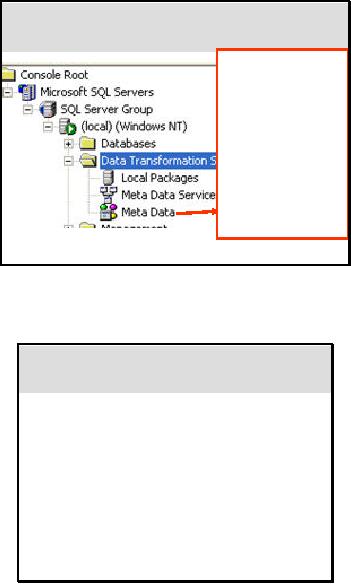
Slide 23
Saving a DTS
Package
Metadata
It is a
repository
of
metadata
information
of
databases
scanned to
Meta
Data
Services
Packages. It
also
provides
version
tracking
facility
of
Packages.
DWH-Ahsan
Abdullah
23
If a package is
saved to SQL Server 2000 Metadata
Services and is scanned for
metadata than its
meta
data information is maintained in a
repository " Meta Data ",
that can be found as
third
option under
node Data Transformation
Services.
Slide 24
DTS
Packages:
4
Operations
· Packages
can be:
1.
Edited
2.
Password
protected
3.
Scheduled
for execution
4.
Retrieved by
version
DWH-Ahsan
Abdullah
24
Packages
that are required for
very complicated tasks are
not trivial to build. To develop
such
packages,
DTS Designer or programming tools
are used. Once such
packages are built they
are
saved
for further use. We may edit
these packages later on. For
editing purposes either DTS
designer or
programming is used. After edit a
package we may keep both
packages that is
package
before editing and package
after editing as two
different versions of same package.
To
maintain version
information packages are
saved in "SQL Server 2000
Meta Data Services".
Tasks in
the package require access
to database objects, when
package is executed. Packages
can
be protected
through passwords. When a package is
built it is not necessary to
execute it
immediately. We
may schedule package to be
executed any time later on. We
may prepare a
package
that is executed after
definite intervals. For example we want
to update our
dataware
house
every night at 12:00 o' clock, what
will we do? We will write a
package to update
dataware
house
and schedule it to run at
12:00 o' clock every
night.
365
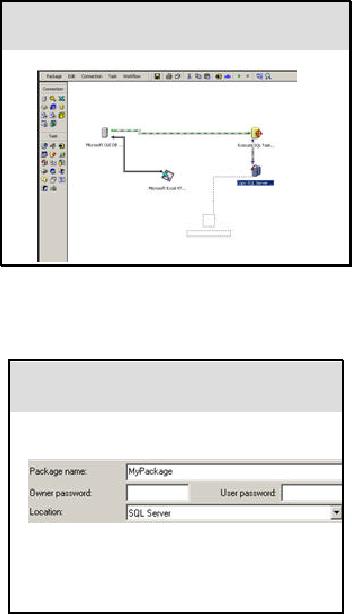
Slide 25
DTS Package
Operations:
Editing
DWH-Ahsan
Abdullah
25
Double click a
package to open in designer.
Drag and drop objects to
edit a package. Designer
is
the
easiest way of editing a package.
Even the packages that
are created through wizards
and are
saved,
can be edited through
designer.
Slide 26
DTS Package
Operations:
Protection
· Save
dialog box allows to
set
passwords
· Owner
password puts limits
on
both editing
and execution of the
package
DWH-Ahsan
Abdullah
26
Enter an
Owner password. Assigning an Owner
password puts limits on who
can both edit and
run
the package.
Enter a
User password. Assigning a User
password puts limits only on
who can edit the
package.
If you create a
User password, you must also
create an Owner
password.
366
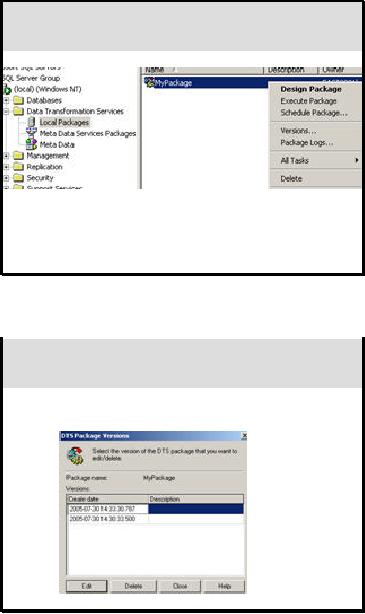
Slide 27
DTS Package
Operations:
Scheduling/Execution
· Right
click any saved package
to
schedule or
execute it
DWH-Ahsan
Abdullah
27
To schedule a
package or to execute a package,
first right click the
package and then select
the
required
option.
Slide 28
DTS Package
Operations:
Versioning
· Right
click any saved package to
view
its version
information
DWH-Ahsan
Abdullah
28
If we want to
get version information of a package we
can see it by right clicking
the package and
selecting
version information. First column
contains creation date and
the other column
contains
the description
about changes if it is saved
with the package.
367
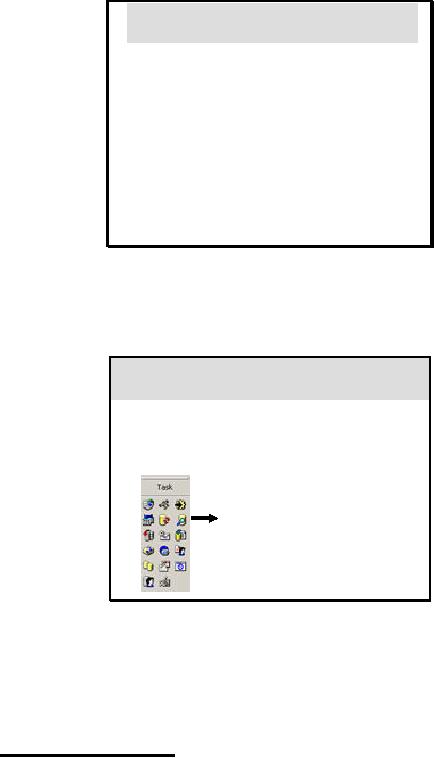
Slide 29
DTS
Tasks
· DTS
Package contains one or
more
tasks
· Task
defines single work
item
Establishing
connections
Importing
and exporting data
Transforming
data
Copying
database objects
etc
DWH-Ahsan
Abdullah
29
DTSPackages
contain a sequence of tasks.
When a package is executed
these tasks are
performed
in sequence or
in parallel. These tasks are
the single work item in a
package. Tasks can be
establishing
connections, extraction of data
from sources, transformations applied on
data,
loading
data to destination, generation of
automated email messages to administrator in
case of
some problem
during the package
execution..
Slide 30
DTS Tasks:
Menu
· Wizard
collects the tasks that
are
invisible to
users
· Designer
allows to view and
arrange
tasks
manually
Set of
all possible tasks
in
designer,
drag the required
task in design area and
set its
properties
DWH-Ahsan
Abdullah
30
A DTS
task is a discrete set of functionality,
executed as a single step in a package.
Each task
defines a
work item to be performed as part of
the data movement and data
transformation
process, or as a
job to be executed.
DTS
supplies a number of tasks that
are part of the DTS object
model and can be
accessed
graphically, through
DTS Designer, or programmatically. These
tasks, which can be
configured
individually,
cover a wide variety of data
copying, data transformation, and
notification
situations.
For example:
Importing
and exporting data. DTS
can import data from a
text file or an OLE DB data
source
(for
example, a Microsoft Access 2000
database) into SQL Server.
Alternatively, data can
be
368
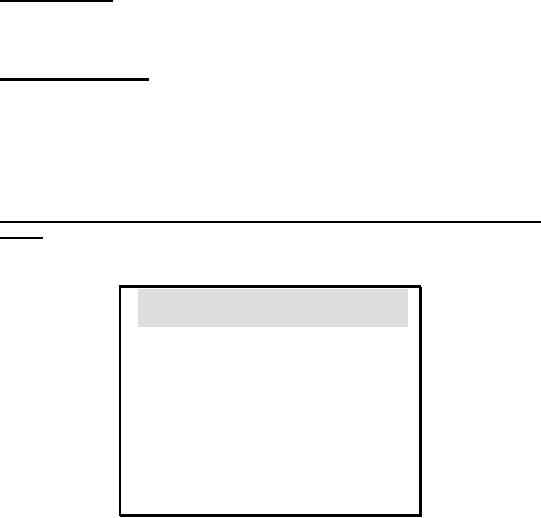
exported
from SQL Server to an OLE DB
data destination (for
example, a Microsoft Excel
2000
spreadsheet).
DTS als o allows high-speed
data loading from text files
into SQL Server
tables.
Transforming
data. DTS Designer
includes a Transform Data
task that allows you to
select data
from a
data source connection, map
the columns of data to a set
of transformations, and send
the
transformed data
to a destination connection. DTS Designer
also includes a Data Driven
Query
task
that allows you to map data
to parameterized queries.
Copying
database objects. With
DTS, you can transfer indexes,
views, logins, stored procedures
,
triggers, rules,
defaults, constraints, and
user-defined data types in addition to
the data.
In addition, you
can generate the scripts to
copy the database objects.
Sending and receiving
messages to
and from other users
and packages. DTS includes a
Send Mail task that
allows you to
send an
e-mail if a package step
succeeds or fails. DTS also
includes an Execute Package
task
that
allows one package to run
another as a package step,
and a Message Queue task
that allows
you to use
Message Queuing to send and receive
messages between
packages.
Executing
a set of Transact -SQL statements or
Microsoft ActiveX® scripts
against a data
source.
The
Execute SQL and ActiveX
Script tasks allow you to
write your own SQL
statements
and scripting
code and execute them as a
step in a package
workflow.
Slide 31
DTS
Transformations
· After
extraction from source data
can
be
transformed
Using
available DTS
transformations
Using
customized transformations
DWHAhsan
Abdullah
-
31
While
transferring data from
source to destination that may be a
single source of truth, data
may
require to be
transformed. Power of DTS
tools lies in the support of
data transformations.
Some
transformations
are already available with
DTS tools and customized
transformations can be
performed through VB
Script or Java
Script.
369

Slide 32
Available
Transformations: Available
· Available
transformations are:
Copy
column transformation
ActiveX
Script transformations
Date
time string
transformations
Uppercase
and lowercase string
transformations
Middle of
string transformations
Read
and write file
transformations
DWH-Ahsan
Abdullah
32
The
slide shows the list of
transformations that are alre
ady available with DTS tools
i.e. DTS
Designer
and DTS import/export wizard. Wizard has
a support of two transformations out of
six
shown
over here:
· Copy
column transformation
· Active-X
script transformation
The
rest four are accessed
through DTS designer and
scripts.
Copy
Column Transformation: Describes
the transformation used to copy
source data to the
destination.
ActiveX
Script Transformation: Explains how to
use Microsoft ActiveX®
scripts to define
column -level
transformations.
Date
Time String Transformation: Describes
the transformation used to convert a
source date
into a
new destination format.
Uppercase
String Transformation: Describes
the transformation used to convert a
string into
uppercase
characters.
Lowercase
String Transformation: Describes
the transformation used to convert a
string into
lowercase
characters.
Middle of
String Transformation: Describes
the transformation used to extract a
substring from
a source
and optionally change its
case or trim white space
before placing the result i
the
n
destination.
Trim
String Transformation: Describes
the transformation used to remove
leading, trailing, or
embedded
white space from a source
string and place the
(optionally case-shifted) result in
the
destination.
Read
File Transformation: Describes
the transformation used to
copy the contents of a
file
specified by a
source column to a destination
column.
Write
File Transformation: Describes
the transformation that creates a
new data file for
each
file
named in a source column and initializes
the contents of each file
from data in a second
source
column.
370
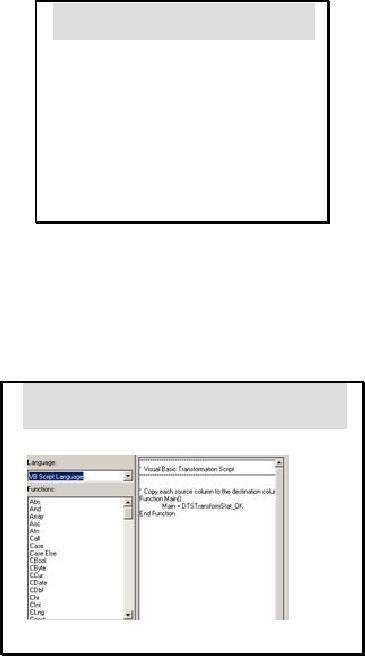
Slide 33
DTS
Transformations: Customized
· Each
available transformation has
ActiveX
Script
working at its back
· To customize an
available transformation
one
needs to modify
the ActiveX Script
according
to one's
need
DWH-Ahsan
Abdullah
33
In SQL Server,
transformations are applied through running
ActiveX Scripts. When we apply
an
available
transformation, tools in SQL Server
generate ActiveX Script
automatically. This
auto
generated
script can be modified or
customized according to our
needs. Customized
transformations
are those in which we
customize the auto generated
ActiveX Scripts to fulfill
our
particular
need.
For
Example:
An available
transformation can transform Saad Munir
Rao to SAAD MUNIR RAO but if
we
want to
transform it as S. M. Rao then we need to
customize the transformation.
Slide 34
DTS Transformations:
ActiveX
· ActiveX
Script
DWH-Ahsan
Abdullah
34
Designer
provides such an interface to
write/customize ActiveX Scripts. To
access it we will see
it later
on.
371

Slide 35
DTS
Connections
· An important
and prior most task
is
the
establishment of valid
connection
· DTS
allows following varieties
of
connections:
Data
source connection
File
Connection
Data
link connection
DWH-Ahsan
Abdullah
35
To successfully
execute Data Transformation
Services (DTS) tasks that
copy and transform
data,
a DTS
package must establish valid
connections to its source and
destination data and to
any
additional data
sources (for example, lookup
tables). Because of its OLE
DB architecture, DTS
allows
connections to data stored in a
wide variety of OLE
DB-compliant formats. In addition,
DTS
packages usually can connect to
data in custom or nonstandard
formats if OLE DB
providers
are available for those
data sources and if you use
Microsoft® Data Link files
to
configure
those connections
Slide 36
DTS
Connections
Data Source,
File Connection, Data
Link
· Data
source connection
All
OLE DB supported
databases
· MS SQL
Server
·
Oracle
· MS Access
2000
· File
Connection
Text
files
· Data
link connection
Intermediate
files containing connection
strings
DWH-Ahsan
Abdullah
36
DTS
allows the following varieties of
connections:
A data
source connection. These
are connections to: standard
databases such as Microsoft
SQL
ServerTM
2000, Microsoft Access 2000,
Oracle, dBase, Paradox; OLE
DB connections to ODBC
data
sources; Microsoft Excel 2000
spreadsheet data; HTML
sources; and other OLE
DB
providers.
A file
connection. DTS
provides additional support for
text files. When specifying a text
file
connection, you
specify the format of the
file. For example:
· Whether a
text file is in delimited or fixed
field format.
Whether
the text file is in a Unicode or an
ANSI format.
· The
row delimiter and column
delimiter if the text file
is in fixed field format.
372
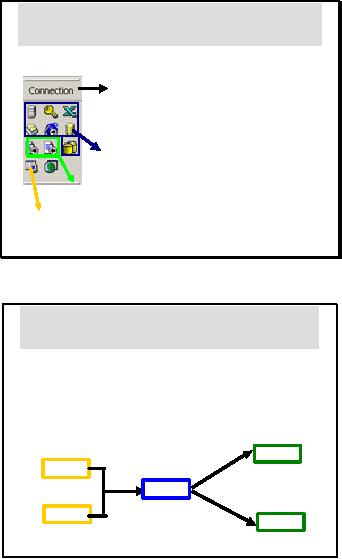
·
The
text qualifier.
Whether
the first row contains
column names.
A data
link connection. These
are connections in which an
intermediate file outside of
SQL
Server
stores the connection
string.
Slide 37
DTS
Connection:Menu
Set of
all possible
connections
in designer,
drag the required
connection
in design area
and
set its
properties
Data
source connection
File
connection
Data
link connection
DWH-Ahsan
Abdullah
37
Slide 38
Package
Workflow
· Package
usually includes more
than
one
tasks
· To maintain
order of execution of
tasks,
workflow is required to be
defined
ss
Task
D
cce
n
On
pletio
Su
Task
A
On
om
c
Task
C
On
Fai
Task
B
lur
e
Task
E
DWH-Ahsan
Abdullah
38
Precedence
constraints sequentially link tasks in a
package. In DTS, you
can use three
types
of precedence
constraints, which can be
accessed either through DTS Designer
or
programmatically:
Unconditional.
If you
want Task 2 to wait until
Task 1 completes, regardless of
the outcome,
link
Task 1 to Task 2 with an unconditional
precedence constraint.
On Success.
If you want
Task 2 to wait until Task 1
has successfully completed,
link Task 1 to
Task 2
with an On
Success precedence constraint.
373
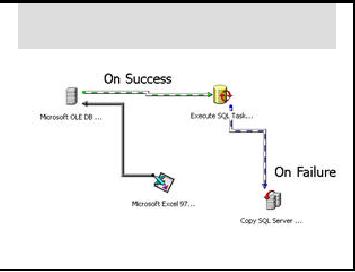
On Failure.
If you want
Task 2 to begin execution only if
Task 1 fails to execute
successfully,
link
Task 1 to Task 2 with an On
Failure precedence constraint. If
you want to run an alternative
branch of
the workflow when an error is
encountered, use this
constraint.
Slide 39
Package
Workflow: Designer
DWH-Ahsan
Abdullah
39
This
slide shows the process of
making workflows using the
designer. It provides a graphical
interface
making the workflow
management very easy
374
Table of Contents:
- Need of Data Warehousing
- Why a DWH, Warehousing
- The Basic Concept of Data Warehousing
- Classical SDLC and DWH SDLC, CLDS, Online Transaction Processing
- Types of Data Warehouses: Financial, Telecommunication, Insurance, Human Resource
- Normalization: Anomalies, 1NF, 2NF, INSERT, UPDATE, DELETE
- De-Normalization: Balance between Normalization and De-Normalization
- DeNormalization Techniques: Splitting Tables, Horizontal splitting, Vertical Splitting, Pre-Joining Tables, Adding Redundant Columns, Derived Attributes
- Issues of De-Normalization: Storage, Performance, Maintenance, Ease-of-use
- Online Analytical Processing OLAP: DWH and OLAP, OLTP
- OLAP Implementations: MOLAP, ROLAP, HOLAP, DOLAP
- ROLAP: Relational Database, ROLAP cube, Issues
- Dimensional Modeling DM: ER modeling, The Paradox, ER vs. DM,
- Process of Dimensional Modeling: Four Step: Choose Business Process, Grain, Facts, Dimensions
- Issues of Dimensional Modeling: Additive vs Non-Additive facts, Classification of Aggregation Functions
- Extract Transform Load ETL: ETL Cycle, Processing, Data Extraction, Data Transformation
- Issues of ETL: Diversity in source systems and platforms
- Issues of ETL: legacy data, Web scrapping, data quality, ETL vs ELT
- ETL Detail: Data Cleansing: data scrubbing, Dirty Data, Lexical Errors, Irregularities, Integrity Constraint Violation, Duplication
- Data Duplication Elimination and BSN Method: Record linkage, Merge, purge, Entity reconciliation, List washing and data cleansing
- Introduction to Data Quality Management: Intrinsic, Realistic, Orr’s Laws of Data Quality, TQM
- DQM: Quantifying Data Quality: Free-of-error, Completeness, Consistency, Ratios
- Total DQM: TDQM in a DWH, Data Quality Management Process
- Need for Speed: Parallelism: Scalability, Terminology, Parallelization OLTP Vs DSS
- Need for Speed: Hardware Techniques: Data Parallelism Concept
- Conventional Indexing Techniques: Concept, Goals, Dense Index, Sparse Index
- Special Indexing Techniques: Inverted, Bit map, Cluster, Join indexes
- Join Techniques: Nested loop, Sort Merge, Hash based join
- Data mining (DM): Knowledge Discovery in Databases KDD
- Data Mining: CLASSIFICATION, ESTIMATION, PREDICTION, CLUSTERING,
- Data Structures, types of Data Mining, Min-Max Distance, One-way, K-Means Clustering
- DWH Lifecycle: Data-Driven, Goal-Driven, User-Driven Methodologies
- DWH Implementation: Goal Driven Approach
- DWH Implementation: Goal Driven Approach
- DWH Life Cycle: Pitfalls, Mistakes, Tips
- Course Project
- Contents of Project Reports
- Case Study: Agri-Data Warehouse
- Web Warehousing: Drawbacks of traditional web sear ches, web search, Web traffic record: Log files
- Web Warehousing: Issues, Time-contiguous Log Entries, Transient Cookies, SSL, session ID Ping-pong, Persistent Cookies
- Data Transfer Service (DTS)
- Lab Data Set: Multi -Campus University
- Extracting Data Using Wizard
- Data Profiling